Video projection using tridimensional mapping on models and surrounding walls.
A unique physical 3D video-mapping experience by turing a white living room into a spacious 360° projection area. This technique allowed us to take control of all colors, patterns and textures of the furniture, wallpapers and carpet. All done with 2 projectors.
A motion detector systems can give your PC eyes, letting it respond to external events by capturing images, or triggering actions. However, there’s a bewildering array of possible set ups, not all of them useful to you. You need to carefully identify
 your needs, and then get tools that are good enough without being too much... overkill can kill your budget!
your needs, and then get tools that are good enough without being too much... overkill can kill your budget!You'll require both hardware and software. You’ll also need advice, because motion detection and video capture are still emerging technologies and might not be as "plug & play" as you would like. Hopefully, the following will help you get started….
really see, not just act like a glorified VCR."
What does motion detection software do?
Motion detection software captures video from an input device and processes this video in real-time to find significant changes between frames. How it responds to these changes depends on what you’ve programmed it to do. Historically, most serve complex security systems and require special equipment. However, general purpose motion detection software like Zone Trigger is now available.
General purpose motion detection is intended for the ordinary users and moves motion detection away from its original security context, bringing it to new places where it can be used to interact with people, automate processes, and replace costly custom hardware with simple non-intrusive monitoring.
For example, the following applications show how general motion capture can reduce costs, increase quality or enable something that wasn't possible before:
- Monitor the state of boxes on a shelf using a single standard camera rather than many specialized sensors.
- Enhance interaction with clients viewing a conference stand by using a multi-zone motion detection.
- Achieve a new level of audience immersion by adding motion detection to an artistic installation.
- Optimize flow through your bricks and mortar store by monitoring motion through various zones.
Good general purpose motion detection software should let you determine exactly what kind of motion to look for and then permit a range of responses, e.g. taking pictures, recording videos and sending e-mail notifications. The best software should also be able to analyse the movement itself. Typical operations include:
- Motion Detection: This is the simplest and most versatile technique. The software looks for anything that is different from one video frame to another. It compares pixel color and brightness (chrominescence and luminescence) without trying to identify anything. It can be trigged by moving objects, lights on/off, shadows, and even vibrations.
- Flow Control: Using motion detection techniques, the software goes one step further and finds the general flow of motion within the video.
- Pattern Matching: The software tries to match the input image to a reference image.
What kinds of cameras work for motion detection?
USB cameras (“webcams”)
 USB cameras, usually called “webcams”, are the quick and dirty solution to hooking a camera to your PC. All you need is the supplied driver software, so you can be up and running in minutes. Better yet, USB cameras are Direct-X compatible and work with almost any video capture software.
USB cameras, usually called “webcams”, are the quick and dirty solution to hooking a camera to your PC. All you need is the supplied driver software, so you can be up and running in minutes. Better yet, USB cameras are Direct-X compatible and work with almost any video capture software.However, there are snags. Though you can connect lots of webcams to a single computer, they’re more or less limited to arm’s reach because a USB cable is not designed for distance.
More importantly, USB cameras vary in quality. Cheap ones don’t always provide clear or accurate images.Artefacts(visible defects) include motion blur and oddness caused by compressing the image before sending it to your PC. Some also do badly in poor light conditions, providing grainy images and low frame rate.
The good news is that some good quality USB cameras have a high resolution and fast frame rate video. Some even come with zoom lenses (note that an automatic variable focus lens is not desirable as it may introduce movement when auto-focusing). Video resultion varies greatly depending on the model, from standard 320x240 to "doesn't fit the screen". Don't let this amount of pixels be your only guide for judging the quality of a camera;The price of the camera is your first clue about the quality of its images.
DV cameras (“camcorders”)
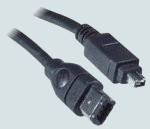 DV cameras – the DV stands for “Digital Video” - are the high-end solution. Often called “camcorders”, these provide awesome image quality and a fast frame-rate. They are almost always equipped with a zoom, and may have nice features such as night-vision. Compatible with Direct-X, they should work with most any recent video capture software.
DV cameras – the DV stands for “Digital Video” - are the high-end solution. Often called “camcorders”, these provide awesome image quality and a fast frame-rate. They are almost always equipped with a zoom, and may have nice features such as night-vision. Compatible with Direct-X, they should work with most any recent video capture software.Like USB cameras, DV cameras are tied to your PC by cable length, this time Fire-Wire (IEEE 1394). However, the main downside is that they’re expensive.
IP cameras (“network cameras”)
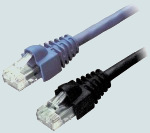 IP cameras, often known as “network cameras”, are more complex remote-controlled devices that connect to a network instead of directly to your PC. Since they are digital, some can supply very high-resolution images, often with superior image quality.
IP cameras, often known as “network cameras”, are more complex remote-controlled devices that connect to a network instead of directly to your PC. Since they are digital, some can supply very high-resolution images, often with superior image quality.IP cameras are not physically tied to your PC since they can broadcast video over a local network (CCTV) or the Internet. Most have embedded web-servers, and some have internal motion-detection systems. You can also find wireless IP cams that will connect directly to your Wifi network.
Network cameras can be expensive, costing about the same as camcorders. Usually lacking Direct-X drivers, they rarely work with motion detection software unless it specifically supports them. I usually recommendAxis IP cameras and Foscam as they use a standard http protocol, and some models even have optionnal Direct-X windows drivers for optimal compatibility. Zone Trigger has been tested with Axis and Foscam network cameras.
Analogue cameras
 Analogue cameras belong to a whole different world. They are fast, provide images with no compression, no artefacts, no motion blur, and use any cable length you need. They may be equipped with a zoom or infra-red vision. Some are even “wireless” (but watch the reception quality, since local interference might compromise motion detection).
Analogue cameras belong to a whole different world. They are fast, provide images with no compression, no artefacts, no motion blur, and use any cable length you need. They may be equipped with a zoom or infra-red vision. Some are even “wireless” (but watch the reception quality, since local interference might compromise motion detection). The downside of analogue cameras is that they are complicated and resource-intensive. Connecting one to a PC requires video capture hardware. In operation, this can hog the system resources, so your PC probably might not be able to do anything else! Many analogue cameras produce interlaced images, requiring special – often 3rd party – software filters, which may introduce artefacts or reduce picture quality. Overall, using an analogue camera requires a more powerful computer than a standard USB camera would.
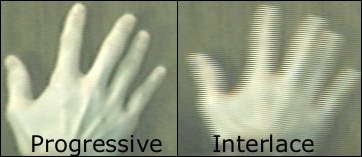
The compatibility of the motion detection software is dependent on the video capture device. Here are a few capture device types:
| 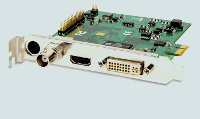 |
| 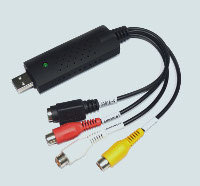 |
|  |
What are good conditions for motion detection?
In the best conditions you must have the following:
- A well fixed camera - stability is key if you want to isolate motion!
- Stable light, no flickering.
- Contrasting background - white objects against white background might not produce great results.
- High camera frame rate and resolution. It goes without saying that if you want to detect a race car, you'll need a fast camera. The motion detection process can only be as good as the input images. If your motion detection needs are simple, than a low-end webcam might be sufficient.
Violence against children
 |
| © UNICEF Malaysia/2006/Nadchatram |
The track, Goodnight, Travel Well, is from the album Day & Age. The video is the second in a series of music video collaborations that highlight the danger and impact of human trafficking.
The series launched last year with an award-winning film - produced by MTV EXIT that featured the Radiohead single All I Need.
"We are deeply shocked and appalled that women and children are forced into such exploitative situations, said a spokesperson for The Killers. We hope that through MTV's efforts, and this powerful video, millions of people across the world learn about this tragic form of modern-day slavery."
The video for Goodnight, Travel Well has the potential to reach more than 500 million households in 168 countries.
There is almost no country in the world now that isnt affected by human trafficking in some way, said UNICEF Chief of Child Protection Susan Bissell. The statistics are staggering. More than 1.2 million children are being trafficked each year and nearly 80 per cent of all trafficking is for sexual exploitation, and the most at risk are girls.
We see this music video as a powerful way to reach out and raise awareness among young people, across borders and across language barriers, she added.
The Goodnight, Travel Well video was directed by film and music video veteran David Slade, in collaboration with the renowned production company Anonymous Content. The creative concept was developed by the Australian advertising agency CRC, with support from the UK music consultancy Huge Music.
The video provides insight into the realities of trafficking, with a particular focus on the trafficking of children and adolescents into forced prostitution.
Children’s rights to protection from violence, abuse and exploitation are clearly laid out in the Convention on the Rights of the Child (CRC), reflecting a basic human consensus that a world fit for children is one in which all children are protected.
Governments have a responsibility to take all available measures to make sure children’s rights are respected, protected and fulfilled. When countries ratify the CRC, they agree to review their laws relating to children and to take all necessary steps to ensure the CRC's minimum standards are met. This involves assessing their social services, legal, health and educational systems, as well as levels of funding for these services.
Governments should take steps to stop children being taken out of their own country illegally. This article is particularly concerned with parental abductions. The CRC's Optional Protocol on the sale of children, child prostitution and child pornography has a provision that concerns abduction for financial gain.
Children have the right to be protected from being hurt and mistreated, physically or mentally. Governments should ensure that children are properly cared for and protect them from violence, abuse and neglect by their parents, or anyone else who looks after them. In terms of discipline, the CRC upholds that any form of discipline involving violence is unacceptable.
Children who cannot be looked after by their own family have a right to special care and must be looked after properly, by people who respect their ethnic group, religion, culture and language.
Children have the right to care and protection if they are adopted or in foster care. The first concern must be what is best for them. The same rules should apply whether they are adopted in the country where they were born, or if they are taken to live in another country.
Children have the right to special protection and help if they are refugees (if they have been forced to leave their home and live in another country), as well as all the rights in the CRC.
Governments should protect children from work that is dangerous or might harm their health or their education. While the CRC protects children from harmful and exploitative work, there is nothing in it that prohibits parents from expecting their children to help out at home in ways that are safe and appropriate to their age. Children's work should not jeopardise any of their other rights, including the right to education, or the right to relaxation and play.
Governments should use all means possible to protect children from the use of harmful drugs and from being used in the drug trade.
Governments should protect children from all forms of sexual exploitation and abuse. This provision in the CRC is augmented by the Optional Protocol on the sale of children, child prostitution and child pornography.
Governments should take all measures possible to make sure that children are not abducted, sold or trafficked. This provision in the CRC is augmented by the Optional Protocol on the sale of children, child prostitution and child pornography.
Children should be protected from any activity that takes advantage of them or could harm their welfare and development.
No one is allowed to punish children in a cruel or harmful way. Children who break the law should not be treated cruelly. They should not be put in prison with adults, should be able to keep in contact with their families, and should not be sentenced to death or life imprisonment without possibility of release.
Governments must do everything they can to protect and care for children affected by war. Children under 15 should not be forced or recruited to take part in a war or join the armed forces. The CRC’s Optional Protocol on the involvement of children in armed conflict further develops this right, raising the age for direct participation in armed conflict to 18 and establishing a ban on compulsory recruitment for children under 18.
Children who have been neglected, abused or exploited should receive special help to physically and psychologically recover and reintegrate into society. Particular attention should be paid to restoring the health, self-respect and dignity of the child.
Children who are accused of breaking the law have the right to legal help and fair treatment in a justice system that respects their rights. Governments are required to set a minimum age below which children cannot be held criminally responsible and to provide minimum guarantees for the fairness and quick resolution of judicial or alternative proceedings.
If the laws of a country provide better protection of children’s rights than the articles in the CRC,those laws should apply.
General Statistics
According to the Department of Social Welfare, 1,999 and 2,279 incidents of child abuse were reported in 2006 and 2007, respectively.
In 2008, the number of child abuse reports went up to 2,780. This figure included 952 cases of neglect, 863 cases of physical abuse and 733 cases of sexual abuse.
Incest accounted for 529 cases, which amounts to 72% of the sexual abuse cases reported in 2008. In the same year, 58 cases of abandoned babies were also reported.
Statistics in 2008 also show that out of the 2,780 child abuse incidents reported in Malaysia, 772 offenders were mothers of the victims, while 494 cases were attributed to fathers of the victims.
STATISTICS
- Reported child abuse cases according to gender and type of abuse
- Reported child abuse cases according to gender and state
(NB. Statistics cited are as of end of 2008 and sourced from the Department of Social Welfare)
No comments:
Post a Comment